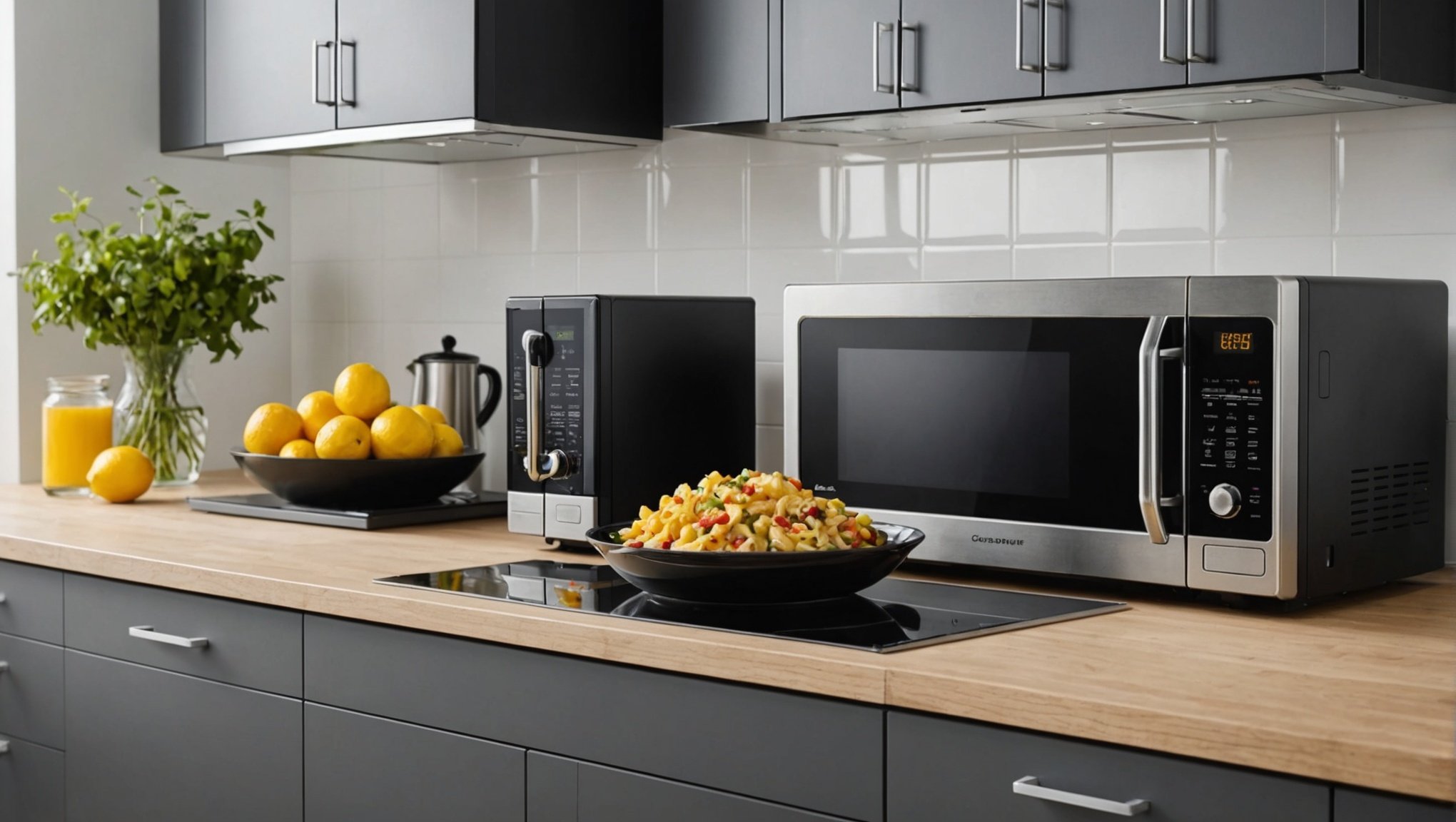Smart Guide to Selecting an Energy-Efficient Microwave for Your UK Home
When it comes to choosing the right microwave for your UK home, there are several factors to consider, especially if you’re looking to save on your energy bills and reduce your environmental footprint. Here’s a comprehensive guide to help you select an energy-efficient microwave that meets your needs.
Understanding Energy Efficiency in Microwaves
Before diving into the specifics of microwave selection, it’s crucial to understand how energy efficiency works in these appliances.
Energy Use and Costs
Microwaves are generally more energy-efficient than traditional ovens because they only heat the food itself, rather than the air around it. According to GreenMatch, a standard 1.5 kW microwave costs about 6p for every 10 minutes of use, making it a relatively inexpensive option for cooking and reheating food.
Energy Ratings
Microwaves, like other appliances, come with energy ratings that indicate their efficiency. However, these ratings are not as straightforward as those for refrigerators or washing machines. Instead, microwaves are often rated based on their heating category, which ranges from A to E, with E being the most common and indicating faster heating times. It’s important to note that these ratings may not always reflect real-world performance, as actual power usage can vary by 5% to 10%.
Also to discover : Selecting the Best Kitchen Tiles for Maximum Durability in UK Weather: A Comprehensive Guide
Types of Microwaves: Which is Best for You?
The type of microwave you choose can significantly impact its energy efficiency and overall performance.
Flatbed vs Turntable
Flatbed microwaves offer extra cooking space and are easier to clean since they lack a traditional turntable. However, they are generally more expensive. Here are some key points to consider:
- Extra Cooking Space: Flatbed models allow for bulky or oblong containers without the need for rotation.
- Ease of Cleaning: Fewer places for grime to collect.
- Cost: Typically more expensive than turntable models.
Freestanding vs Built-in
Freestanding microwaves sit on your countertop, while built-in models integrate into your kitchen units. Here are the pros and cons:
- Freestanding:
- More affordable.
- Easy to install and move.
- Built-in:
- More expensive.
- Provides a sleek, integrated look but requires professional installation.
Key Features to Look For in an Energy-Efficient Microwave
When selecting a microwave, several features can enhance its energy efficiency and overall usability.
Auto Cook Programs
These programs allow you to enter the type and weight of food, and the microwave sets the time and power automatically. This feature ensures that your food is cooked efficiently without overcooking or undercooking.
- Auto Defrost: Uses bursts of low heat to defrost food based on its weight.
- Auto Reheat: Calculates the reheating time based on the food’s weight and type.
- Specialized Programs: Some models offer programs for specific foods like popcorn or roasts.
Power Levels and Wattage
A higher wattage doesn’t always mean better performance. Here’s what you need to know:
- Adjustable Power Levels: Allows for flexibility in cooking, such as blasting on full power for liquids or using lower power for defrosting.
- Wattage: While higher wattage microwaves cook faster, they may not always perform better. For example, a 700W microwave can cook as well as a 1,000W model.
Smart Technology
Smart microwaves can be controlled via voice commands or smartphone apps, adding convenience and potentially improving energy efficiency.
- Voice Control: Models like the GE Smart Microwave Oven can be controlled using Amazon Alexa or Google Assistant.
- Scan-to-Cook Technology: Some smart microwaves come with scan-to-cook features that use barcodes to set the perfect cooking time and power.
Budget and Price Considerations
Microwaves vary widely in price, and your budget will play a significant role in your decision.
Less Than £60
For basic needs, microwaves under £60 are available but will be limited in features.
- Simple Heating and Defrosting: Good for basic tasks but lacks auto cook and defrost programs.
- Compact Size: Often smaller and more suitable for limited countertop space.
Around £100
At this price point, you can find microwaves with more advanced features.
- Auto Programs: Includes digital displays and push-button or touch-panel controls.
- Delayed Start and Multi-Stage Cooking: Adds convenience and flexibility.
Around £200
For more advanced features and better energy efficiency, consider spending around £200.
- Self-Cleaning Catalytic Linings: Makes maintenance easier.
- Pull-Down, Oven-Style Doors: Easier to handle hot dishes.
- Accessories: Includes crisper plates and steamer accessories.
Comparing Energy Efficiency: A Detailed Table
Here is a comparative table to help you understand the energy efficiency and key features of different microwave models:
| Model | Power (W) | Energy Rating | Key Features | Price Range |
|---|---|---|---|---|
| Toshiba EM925A5A | 1100 | E | Simple buttons, mute button, evenly-cooked results | £100-£150 |
| Sharp SMC0912BS | 1100 | E | Sleek design, user-friendly control panel, practical operation | £100-£150 |
| GE JES1072SHSS | 700 | E | Compact, space-saving footprint, preprogrammed settings | £50-£100 |
| Panasonic NN-SN65KB | 1200 | E | Inverter technology, child-safety lock, five useful presets | £150-£200 |
| GE Smart Microwave Oven | 900 | E | Smart connectivity, scan-to-cook technology, voice control | £150-£200 |
Practical Tips for Using Your Microwave Efficiently
To get the most out of your microwave and save energy, here are some practical tips:
Use the Right Vessel
- Glass or Ceramic: These materials are better for microwave cooking as they distribute heat evenly and do not absorb microwave energy.
Cover Your Food
- Prevent Splatters: Covering your food helps in reducing splatters and makes cleaning easier.
Defrost Wisely
- Use Auto Defrost: If your microwave has an auto-defrost feature, use it to avoid overcooking or undercooking your food.
Clean Regularly
- Maintain Efficiency: Regular cleaning ensures that your microwave operates efficiently and safely.
Real-Life Examples and User Experiences
Here are some real-life examples and user experiences that highlight the benefits of choosing the right microwave:
Compact Microwaves for Small Kitchens
For those with limited countertop space, the GE JES1072SHSS is a great option. Despite its smaller size, it comes with preprogrammed settings and a space-saving footprint, making it ideal for quick snacks and meals.
Smart Microwaves for Convenience
The GE Smart Microwave Oven is a standout for its smart technology. Users can control it via voice commands or smartphone apps, making it a convenient addition to any kitchen. However, some users have noted that the voice commands can be finicky, and the microwave may not cook food as evenly as other models.
Choosing an energy-efficient microwave involves considering several factors, from the type of microwave to its features and price. By understanding the different types of microwaves, their energy ratings, and key features, you can make an informed decision that not only saves you money on your energy bills but also enhances your cooking experience.
Final Tips
- Read Reviews: Check reviews from reputable sources to get a real-world perspective on the microwave’s performance.
- Check Energy Labels: Look for energy labels and ratings to ensure you’re getting an efficient appliance.
- Use Energy-Saving Features: Take advantage of features like auto cook programs and smart technology to optimize your energy use.
By following these guidelines, you’ll be well on your way to selecting a microwave that is not only efficient but also meets all your cooking needs in your UK home.






